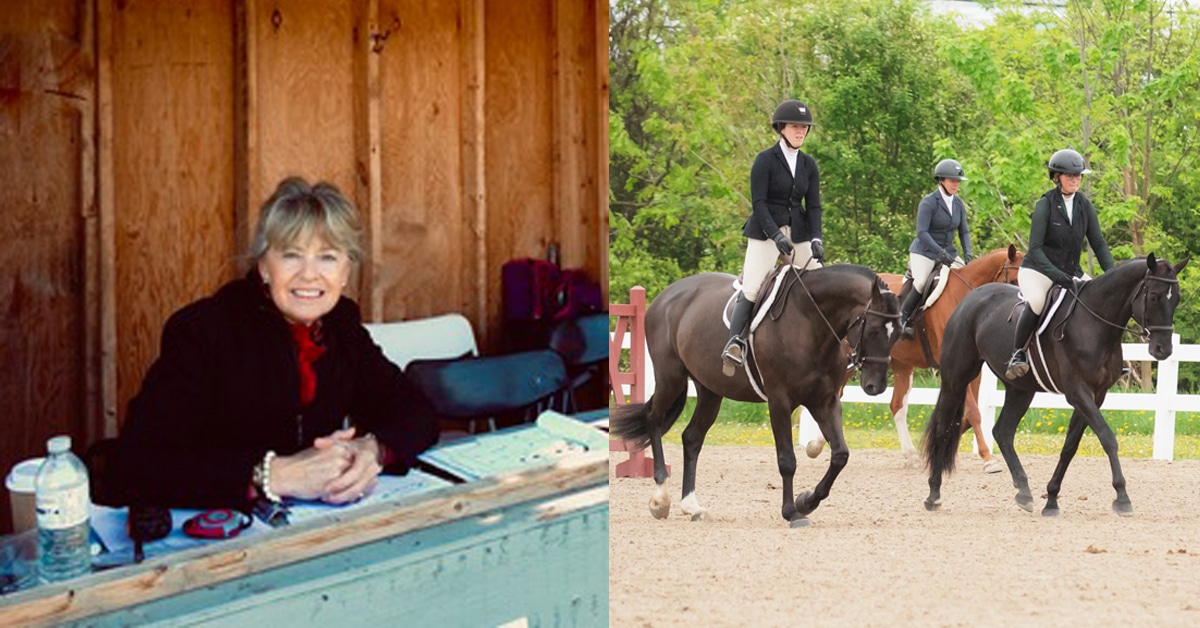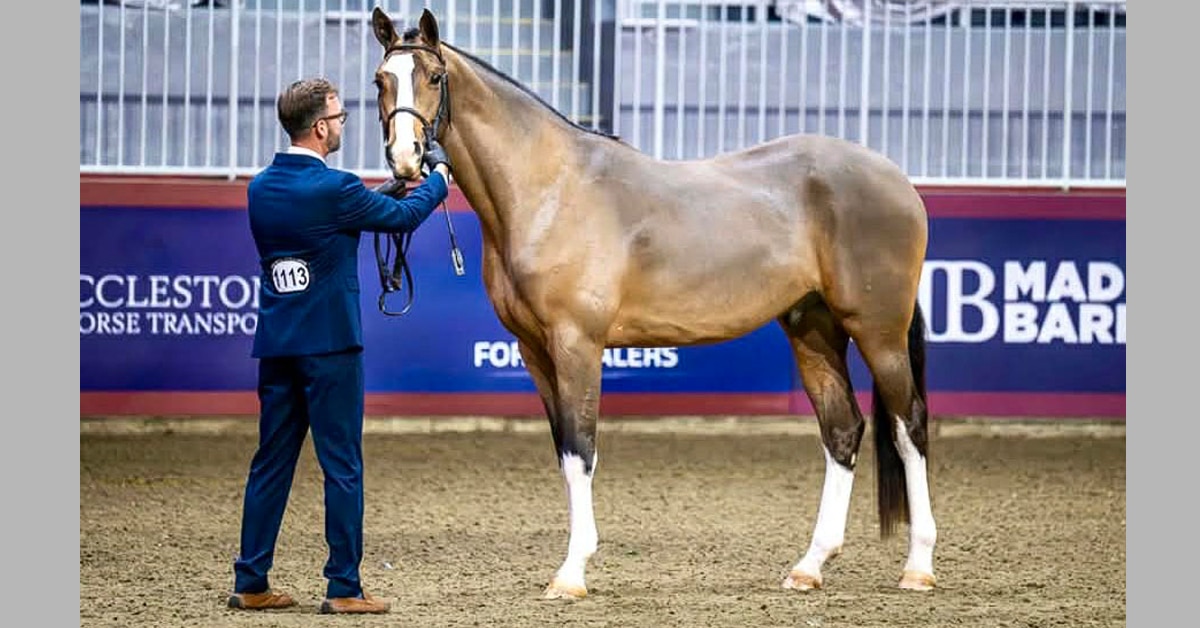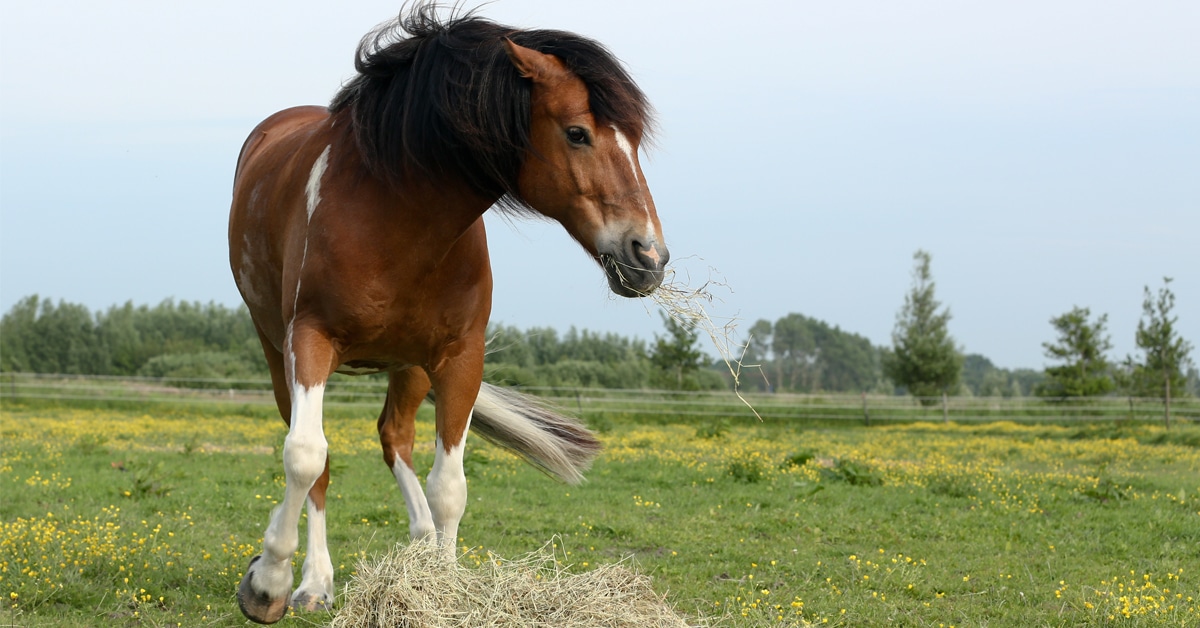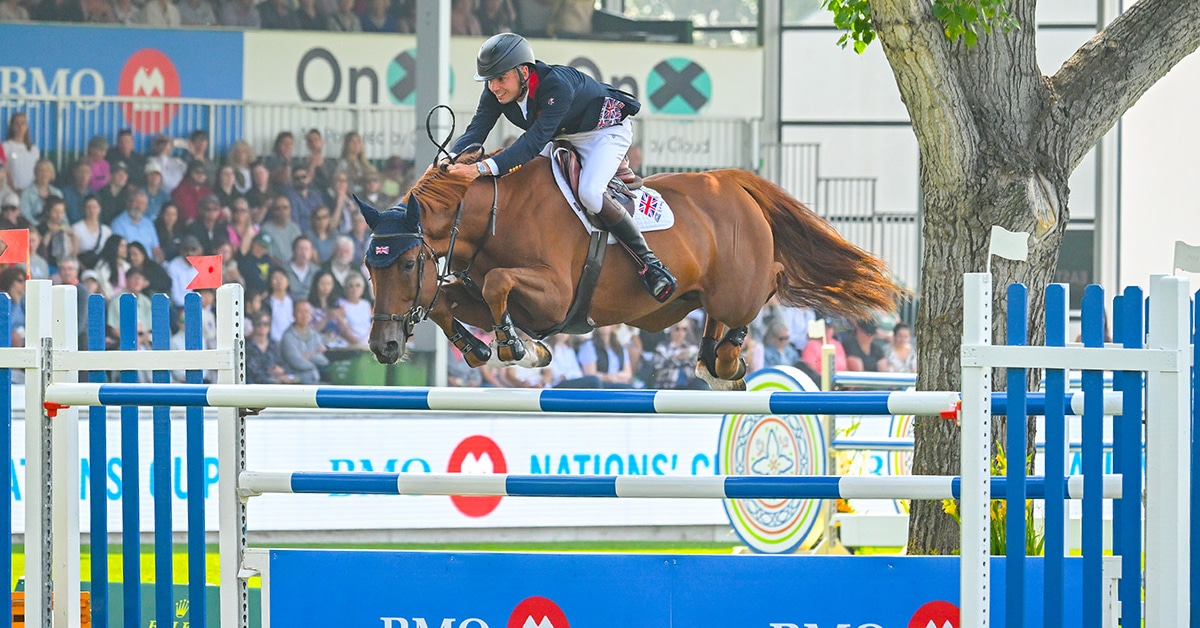Under the banner of Stoney Fields, which has been in business for over 40 years, the Mulligan family of Schomberg, ON, and their students regularly attend these prestigious Finals – and with a great deal of success. Stoney Fields’ victories in the pony ring here in Canada are especially noteworthy.
In 2014 alone, these 2011 OHJA Trainers of the Year produced the OHJA Large Pony Medal Finals Champion, OHJA Champion Medium Pony Hunter, and OHJA Champion Large Pony Hunter. At the 2014 Royal Winter Fair, Cherrybrook Skye Blue and Christine Carlsen brought home the division championship in the Large Pony division, were awarded Grand Pony Champion, and won the ‘Killer Tom’ High Score Hunter award and Best Junior Rider award. Cherrybrook Just Blue In and Leanna Lazzari were Medium Pony Champions and continued a four-year streak of Stoney Fields’ ponies winning the OHJA Pony Power Final. The farm has also produced countless ponies that have gone on to compete with good results at the USEF Pony Finals.
Breeding quality ponies
Qualification to the USEF Pony Finals is earned by being champion or reserve champion in your respective division at a USEF-rated national show. “The competition is very stiff, not only because of the quality of the ponies and riders, but also just because of the sheer numbers of competitors,” explains Lois Mulligan. It is not uncommon to be faced with over 100 ponies in each of the eight divisions at Pony Finals.
Regardless, Canadian entrants hold their own against their American counterparts, due in large part to the efforts of Canadian pony breeders. “Of course, there are the established successful breeders like Beaverwoods and Northwinds, but Canada is starting to develop new pony breeders such as Crown Ridge, Anning Mills, and Wrenwood, just to name a few in Ontario that are raising the bar,” says Mulligan. “The United States may have many more breeders that have long-standing pony stallions who have been named USEF hunter pony sires, but the pony industry is much larger south of the border. It is a huge industry and large amounts of money get spent on purchases and leases of those quality, well-bred ponies. Our Canadian ponies can be competitive, but they need to be of that quality.”
Selecting that quality, type, and suitability capable of competing against the top American ponies is a process that the Mulligans have honed over the years. “We select a competitive pony prospect based on what is required for any horse show: looks, movement, exceptional jump and scope,” Mulligan explains. “We like them to be very ‘horse-like.’ We are not seduced by the requirements needed only to excel in the local market, but rather one that will ultimately be competitive anywhere in North America. My husband, Peter, is the one with the eye,” she adds.
“We are also prepared to start from scratch and are willing to live through the ups and downs that the ponies can display during their developmental period.” Additionally, Mulligan notes that it requires the right rider to bring ponies up through the levels; one that can train the pony to be agreeable, adjustable, and rideable enough for small children. “Some green ponies will try and show attitude throughout aspects of their training, but consistency of deliverance for what you are asking, both in method and rider application, is key,” she explains of the Stoney Fields training philosophy. “Short-cuts generally do not work. You will often see our ponies counter-cantering out in the warmup area and it is an example of what has become a daily part of our training since the green ponies were taught lead changes.”
Unique format, unique rules
Pony Finals follows the format of only one over-fences class, an under-saddle, and an in-hand model class where ponies are judged on conformation. Having only one jumping class leaves little room for error and requires a bit of luck to be on your side. “It takes a quality pony to win the model and under-saddle, but sometimes it can be anyone’s win over jumps,” Mulligan explains. “That special pony who lays down a wonderful trip will be right up there, but the format often means a brave pony, while perhaps not as special, will still get a top ribbon.” The outcome can be quite unpredictable. “Many times I have seen the winner of a previous year stop at the first fence the next year!”
For the most part, USEF-rated divisions have a model class, so that when riders qualify they have a taste of modelling their ponies throughout the season. Mulligan applauds the efforts of Pony Finals organizers, who have up to ten top American professionals put on ‘model clinics’ several mornings during the week. “It helps the kids learn how to stand them up, how to get the lazy ones to jog, and what tack might be best suited to certain ponies. Sometimes there are 60 ponies that take part, and the professionals will answer questions posed to them at the end. It’s very informative, and I truly wish Equine Canada or show managers would introduce a model or conformation class in the pony divisions. The model is also a platform for the breeders, and a reward to showcase their efforts.”
The Walnut Ring at the KHP is a very large sand arena set between a row of waving flags and VIP tents. The courses are long and the jumps are impressive. “It is easy for pony and rider to get distracted,” says Mulligan. “The ponies can flat twice a day in the Walnut Ring, but unlike the medal and jumper ponies who get either a schooling class or open schooling, the hunter ponies do not get to jump in the ring beforehand.” A course walk is scheduled to allow the kids a chance to familiarize themselves with the track.
“Everything is run like a Swiss clock and on a very strict schedule, so you cannot be late,” stresses Mulligan. “They line the ponies up in order of go on the ramp in groups of five. You could be standing there for ten minutes from your last schooling jump until you step into the ring. Riders have to make sure their ponies are alert and that they themselves stay focused.”
Mulligan insists it isn’t necessarily a pre-requisite to success that the young riders have ice water in their veins. The Stoney Fields team makes it a priority that their clients enjoy the trip to Pony Finals; Mulligan insists they are there to have fun and learn. “The kids put so much pressure on themselves as it is; we just want them to enjoy it and take something positive away from the experience.”
It can be intimidating to compete against dozens of child riders who campaign a stable full of ponies all year and have the ring exposure of seasoned pros. “Although natural talent is a great asset to work with, the desire to learn and better themselves is the key to a successful rider. If they do their homework, then ring confidence becomes second nature,” says Mulligan.
Rules unique to Pony Finals do attempt to level the playing field. For example, each competitor can show only one pony per division and only the competitor showing the pony can ride it 48 hours prior to the competition.
Mulligan believes the poise and consistency of performance that can only come with time in the ring can be difficult to match with our Canadian circuit. “Pony riders in the States often have more than two ponies in each division, so their exposure in the ring is greater. As in any sport, the more times you do something, the more confident and accurate you become. They also have many more high-profile horse shows in addition to Pony Finals, such as Devon, Capital Challenge, Harrisburg, and Washington, whereas we only have The Royal Winter Fair to really develop the ability to perform under high pressure.”
An inspiring experience
To be surrounded by the best of the best in the pony world is an experience that cannot be measured in ribbons for those involved in the journey to the Walnut Ring. The competition exposes riders, parents and trainers to the highest quality of pony competition in North America, and seeing this standard is what ultimately encourages improvement.
“There really is nothing like Pony Finals and I think, when possible, every pony rider should experience it – if not by competing, then by spectating. It is like being in a candy store where there is one more delectable pony after another.
“As a trainer, I have enjoyed every year that I have gone, and it is a satisfying feeling to know that you have brought along either a pony or a rider that has worked hard enough to qualify. The goal is to enjoy the experience and as a Canadian, know that we can walk away feeling that we can compete with the best in the business.”
The Latest









